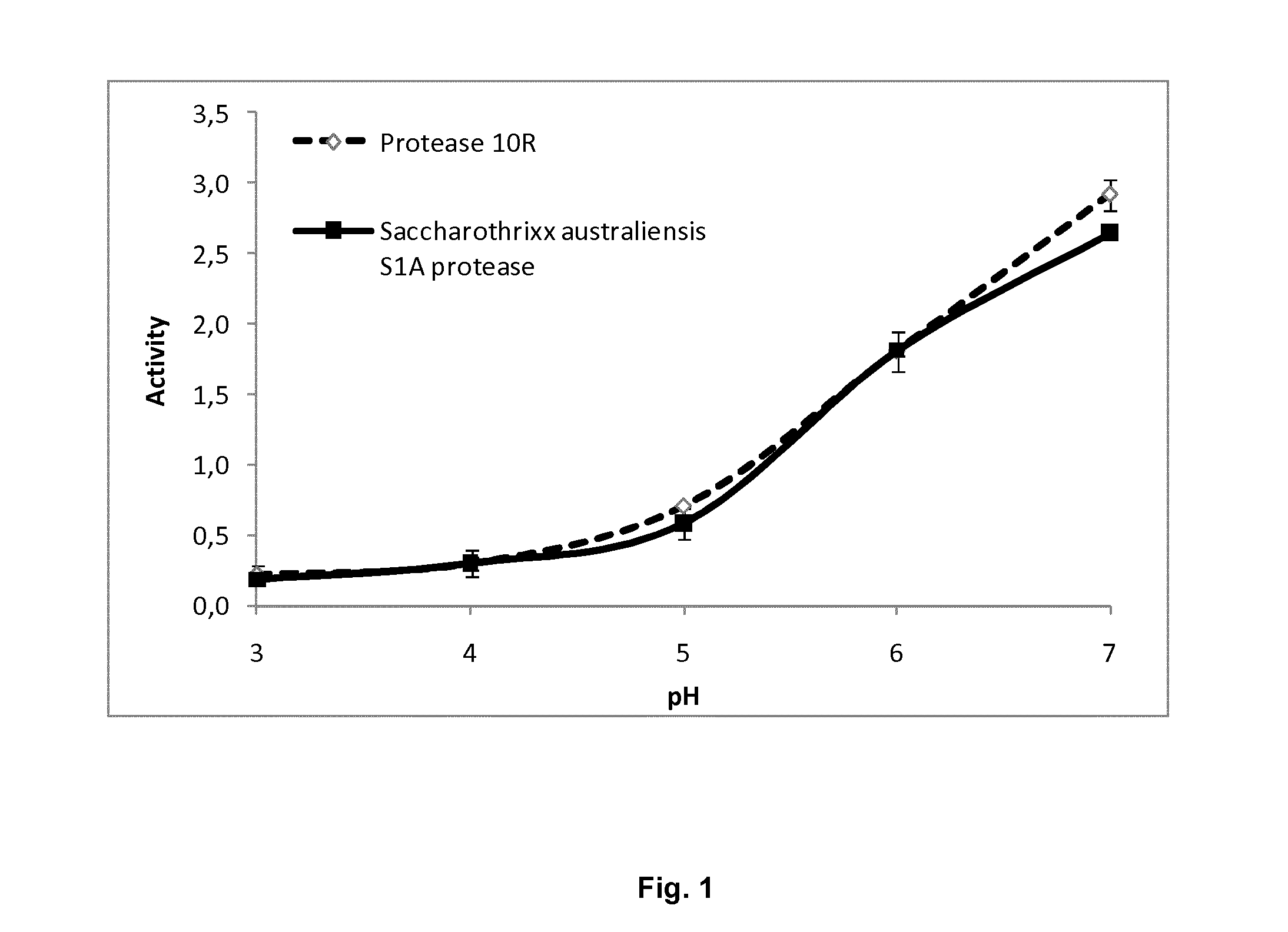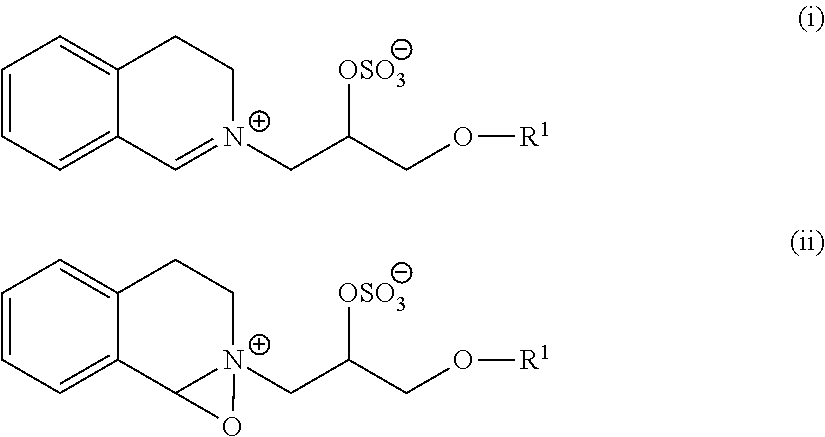Polypeptides Having Protease Activity and Polynucleotides Encoding Same
a technology of protease activity and polynucleotide, which is applied in the field of protease activity isolated polypeptides and nucleic acid sequences encoding the proteases, can solve the problems of global tendency to reduce the amount of detergent components, lowering wash time, ph and temperature, and affecting the environment negatively
- Summary
- Abstract
- Description
- Claims
- Application Information
AI Technical Summary
Benefits of technology
Problems solved by technology
Method used
Image
Examples
embodiments
[0091]In certain embodiments of the invention, the protease of the invention exhibits beneficial thermal properties such as thermostability, steam stability, pH properties, such as acid stability, etc. An embodiment of the invention is isolated polypeptides having improved protease activity between 37° C. and 60° C., such as between 37° C. and 50° C., or at 37° C., 50° C. or at 60° C. compared to protease 10R.
Acidity / Alkalinity Properties
[0092]In certain embodiments of the invention the protease of the invention exhibits beneficial properties in respect of pH, such as acid stability etc. Stability of the protease at a low pH is beneficial since the protease can have activity in the intestine after passing through the stomach. Stability of the protease at a high pH is beneficial for cleaning and washing since detergent compositions often have an alkaline pH. In one embodiment of the invention, the protease retains >90% activity after 2 hours at pH 3 as determined using the method des...
example 1
DNA-Preparation and Sequencing of the Saccharothrix Australiensis Genome
[0375]Chromosomal DNA Saccharothrix australiensis was isolated by QIAamp DNA Blood Mini Kit” (Qiagen, Hilden, Germany). 5 ug of chromosomal DNA of each strain were sent for genome sequencing at FASTERIS SA, Switzerland. The genomes were sequenced by Illumina Sequencing. The genome sequences were analysed for secreted S1 proteases and the S1 protease (SEQ ID:1 / SEQ ID:2) was identified.
example 2
Expression of the S1 Protease from Saccharothrix Australiensis
[0376]Based on the nucleotide sequence identified as SEQ ID NO: 1, a synthetic gene having SEQ ID NO: 3, was synthesized by Gene Art (GENEART AG BioPark, Josef-Engert-Str. 11, 93053, Regensburg, Germany). The synthetic gene was subcloned using ClaI and MluI restriction sites into Bacillus expression vector as described in PCT / EP2011 / 064585 Example 1. Transformants were selected on LB plates supplemented with 6 μg of chloramphenicol per ml. The recombinant Bacillus subtilis clone containing the integrated expression construct was selected and cultivated on a rotary shaking table in 500 mL baffled Erlenmeyer flasks each containing 100 ml casein-based media supplemented with 34 mg / l chloramphenicol. The clone was cultivated for 5 days at 30° C. The enzyme containing supernatants were harvested and the enzyme purified as described in example 3.
PUM
| Property | Measurement | Unit |
|---|---|---|
| Fraction | aaaaa | aaaaa |
| Dimensionless property | aaaaa | aaaaa |
| Solubility (mass) | aaaaa | aaaaa |
Abstract
Description
Claims
Application Information
 Login to View More
Login to View More - R&D
- Intellectual Property
- Life Sciences
- Materials
- Tech Scout
- Unparalleled Data Quality
- Higher Quality Content
- 60% Fewer Hallucinations
Browse by: Latest US Patents, China's latest patents, Technical Efficacy Thesaurus, Application Domain, Technology Topic, Popular Technical Reports.
© 2025 PatSnap. All rights reserved.Legal|Privacy policy|Modern Slavery Act Transparency Statement|Sitemap|About US| Contact US: help@patsnap.com


